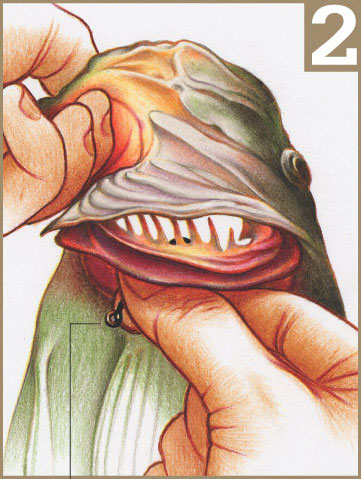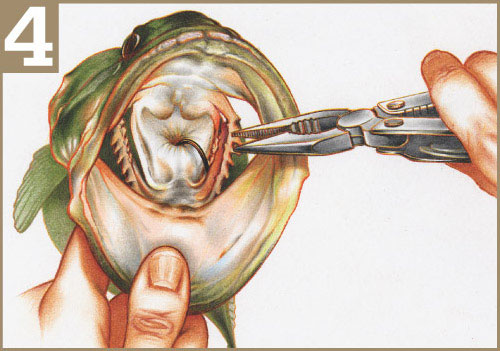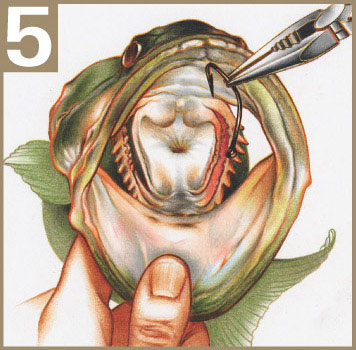|
|
Post by uncross on Dec 5, 2012 21:48:59 GMT -5
couldn't remember if I put this on here or not, it works real well.
|
|
|
|
Post by uncross on Dec 5, 2012 21:55:24 GMT -5
from another site: 1) With the hook in the gullet, note which side of the fish's mouth the hook shank is toward. Note: For illustration sake, the line is eliminated here in steps 2 through 5. In reality, the line stays connected as this technique is performed.  (2) With a finger or two, reach in through the last gill arch on that side of the fish and push and pull down on the hookeye so the hook turns and . . .  (3) rolls out below the gill toward the side of the fish. At that point, amazingly, the hook, barb and all, almost always pops free from its hold in the fish's gullet.  (4) Reach into the fish's mouth and grip the bend in the hook (which is now up) and . . .  (5) lift it free. If the fish's mouth is too small to reach in with your hand, use a needle-nose pliers to grip the hook bend.  What needs to be emphasized is how resilient a fish's gills actually are -- far from being the fragile organs often suggest by some sources. And the occasional bleeding fish? Does it have to be kept? Just get the fish back into the water as soon as possible and, more often than not, the bleeding stops. The technique also works superbly on walleyes, smallmouths, and other fish, usually taken on smaller hooks, often salmon-style hooks. |
|
|
|
Post by wvfisherman on Dec 6, 2012 20:04:34 GMT -5
Good stuff everybody who fishes needs to learn the correct way to remove hooks.
|
|
|
|
Post by anglerxxx on Dec 7, 2012 10:55:42 GMT -5
I've used this technique 3 or 4 times since learning about it this summer. It really is easy once you get the hang of it.  Thanks for sharing! |
|

